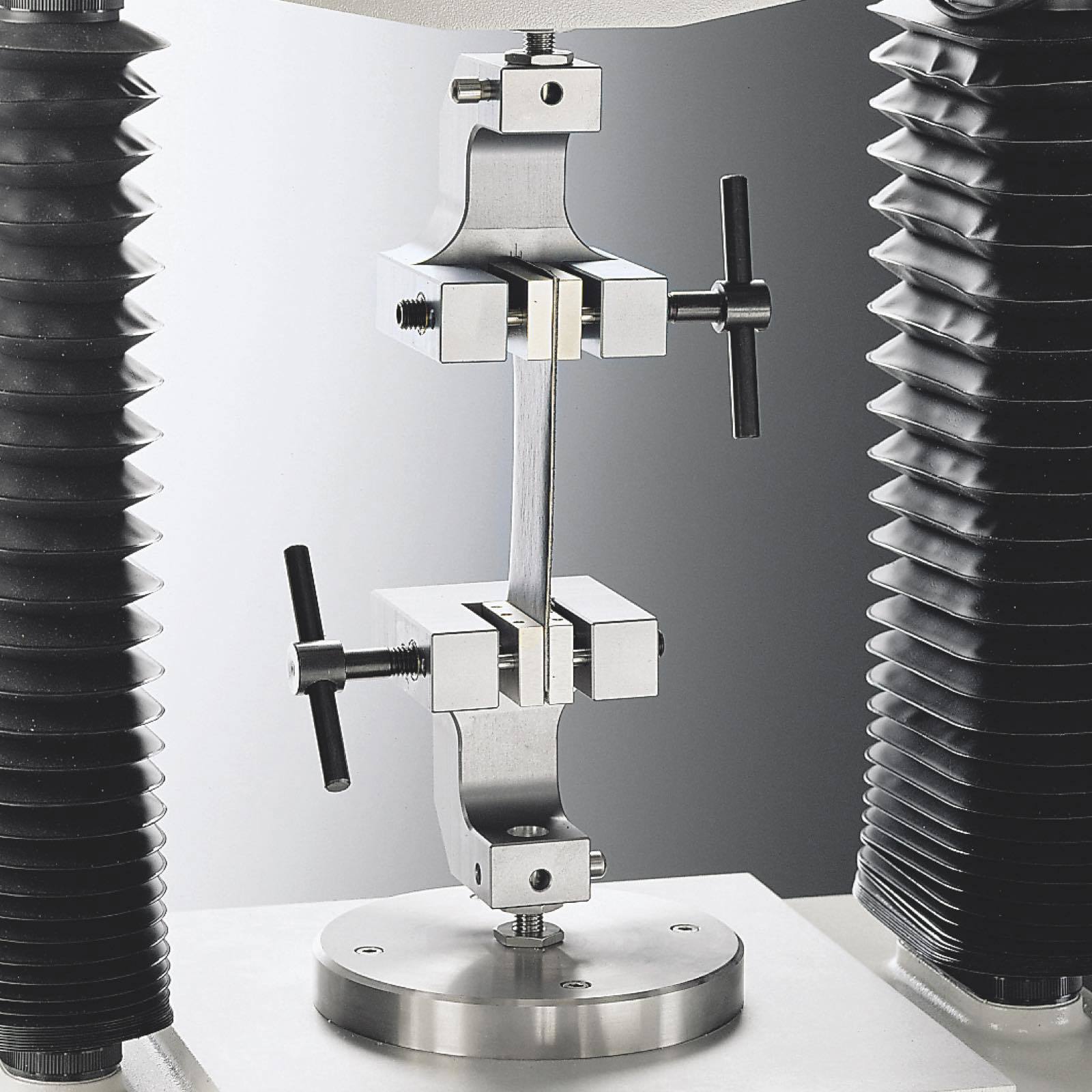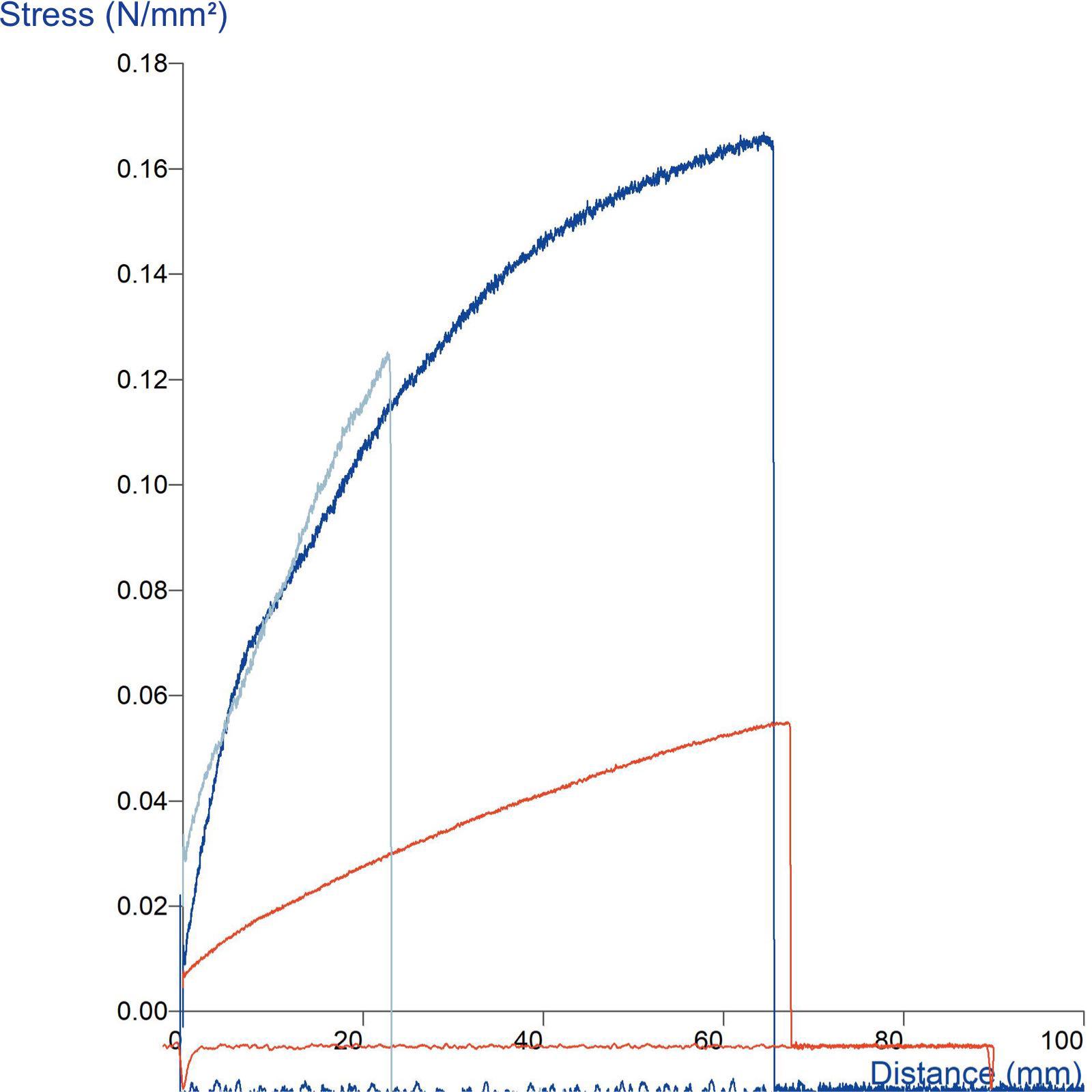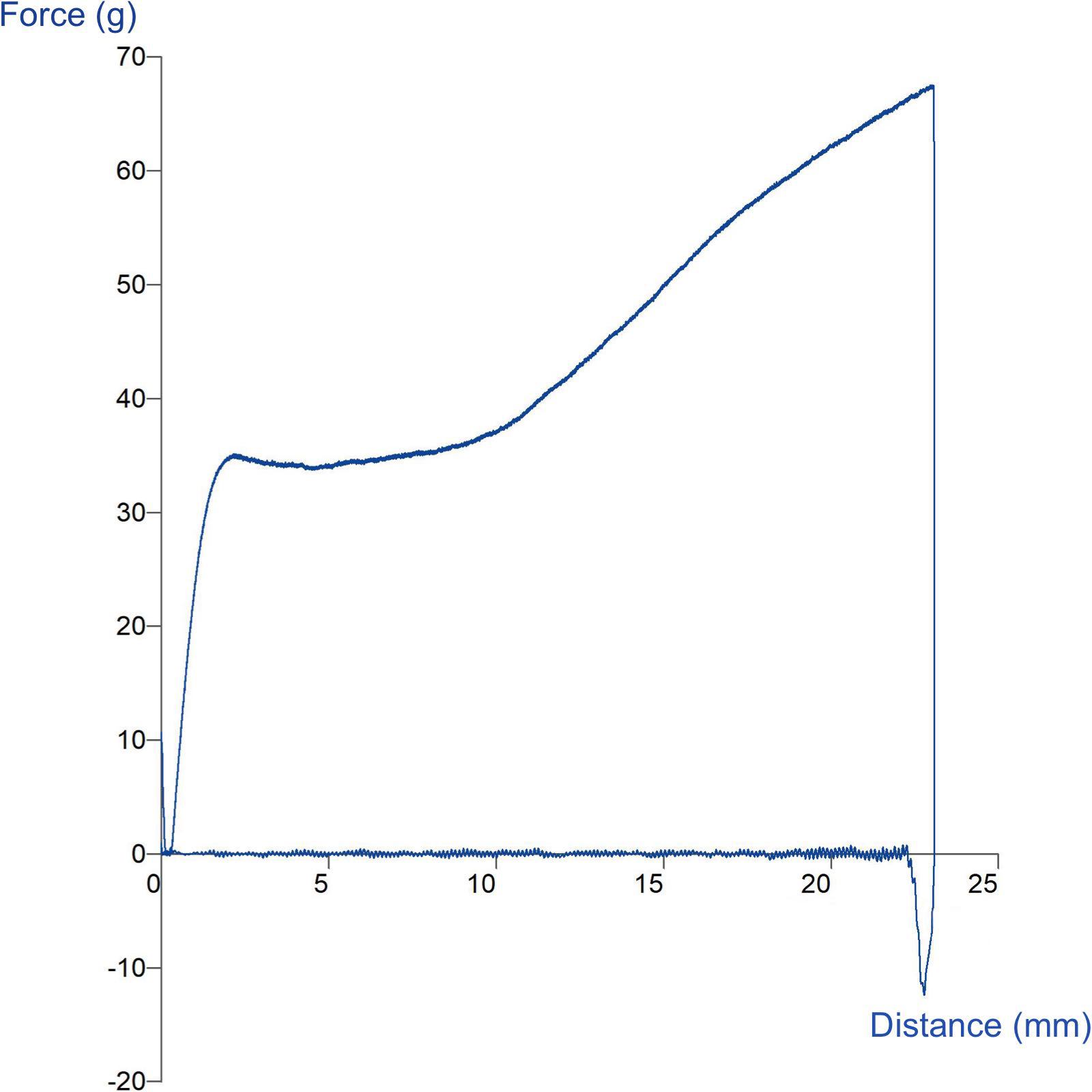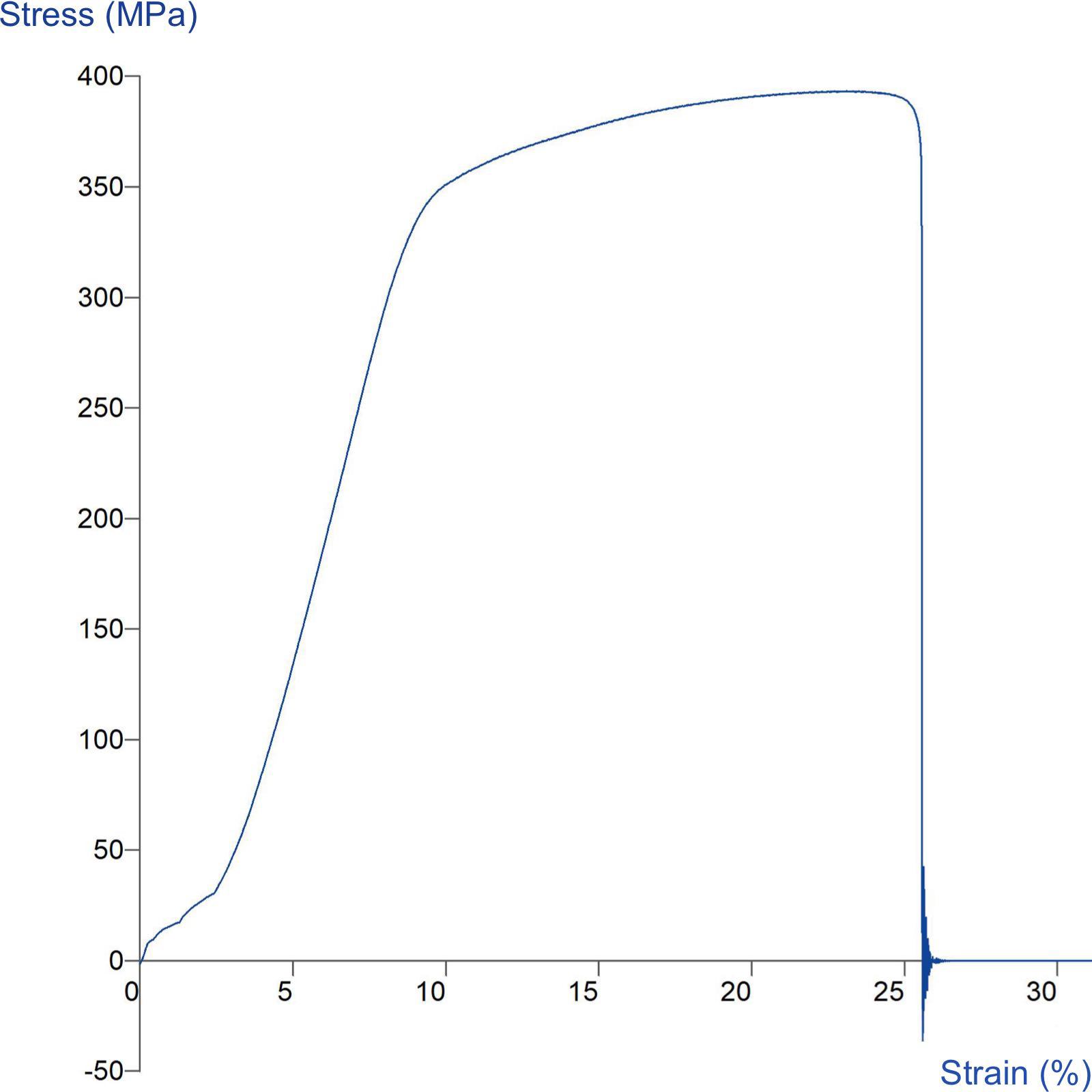How to measure tensile strength/break strength

Tensile strength: definition and importance
Tensile strength refers to the maximum force or stress a material can withstand while being stretched or pulled before breaking. It is a key parameter in determining material suitability in applications like quality control, materials selection, and product development. Tensile strength is crucial in material science, engineering, and construction to predict how a material behaves under force. There are three key types of tensile strength measurements:
- Yield strength: The stress at which a material begins to deform plastically.
- Ultimate strength: The maximum stress a material can endure.
- Breaking strength: The stress at which a material breaks or ruptures.
While tensile strength measures the material’s resistance up to the point of failure, breaking strength specifically refers to the load or force at the moment of breakage. Breaking strength is also expressed in units of stress or force per cross-sectional area (e.g., MPa, psi, N/mm²).
Tensile strength can relate to the toughness of products. The higher the tensile strength a product possesses, the more difficult or tougher it is to stretch. This property can be a positive feature in some products, for example in rope and rubber bands to an extent, but is regarded as unacceptable or negative in chewing gum, mozzarella cheese, noodles or Christmas crackers.
By understanding tensile strength/breaking strength, manufacturers can select materials that resist breaking under specific loads, ensuring product durability and reliability.
Further example applications of tensile strength testing
Tensile strength testing with a Texture Analyser allows industries to evaluate how materials withstand pulling forces before breaking. Below are common applications:
- Textile fibre tensile strength testing: Measuring the force required to pull fibres like cotton or nylon to breaking point to assess their strength is crucial for ensuring durability and performance in applications such as clothing, parachutes, tents, and industrial ropes.
- Metal wire and cable tensile strength analysis: Testing metal wires used in construction by pulling them until they break to evaluate their durability – high strength is needed to withstand tension without breaking.
- Rubber and elastomer tensile strength measurement: Stretching rubber or elastomer samples to evaluate their maximum tensile capacity.
- Plastic film and sheet tensile testing: Testing plastic films for packaging by pulling them until they tear, determining their tensile strength. Tensile strength is important in ensuring that the packaging can endure handling, storage, and transportation without tearing.
- Paper and cardboard tensile strength evaluation: Pulling paper or cardboard to breaking point to assess their suitability for packaging or printing.
- Adhesive tape tensile strength testing: Measuring the force required to stretch adhesive tape until it breaks, ensuring performance in packaging.
- Polymer and composite material tensile strength measurement: Stretching polymer and composite materials used in aerospace or automotive applications to their breaking point.
- Medical device tensile strength testing: Assessing the tensile strength of sutures or implant materials to ensure safety in medical devices.
- Fabric and textile material tensile strength evaluation: Pulling fabric samples used in clothing or upholstery to evaluate their resistance to tearing.
- Food stretching property assessment: Measuring the tug force of a pizza crust or the stretch properties of noodles.
In each of these examples, the Texture Analyser quantifies tensile strength by applying controlled forces/distances, providing valuable data for material characterisation, product development, and quality control.
Typical probe/attachment used for measurement
In a typical tensile strength/breaking strength measurement test, a tensile test involves securing the sample material in a gripping attachment pulling the grips apart until the material breaks. The test measures the maximum tensile strength and the point at which the material yields, deforms, and ultimately breaks.
Typical comparison of samples
How to interpret the Texture Analyser graph
When measuring tensile strength/breaking strength, the force vs distance/time or stress vs. strain graph depends upon the characteristics of the material. Different materials exhibit different tensile and breaking strength profiles based on their composition, molecular structure, and inherent properties resulting in different graph shapes – stronger and stiffer samples show higher forces, brittle samples break before any plastic deformation occurs. Materials that are ductile and thin or deform during tension create varying loss of linear behaviour i.e. produce more curved profiles until their point of ultimate failure.
- Brittle materials (e.g., glass, ceramics, hard plastics, dry snacks) tend to break quickly after reaching their tensile limit, with little to no plastic deformation. They exhibit low elongation and break without much warning, showing a steep, quick rise and sharp drop in force at the breaking point displayed as a triangular shaped profile. While they may have high compressive strength, brittle materials tend to have lower tensile strength and break more easily under tension.
- Ductile materials (e.g., metals like aluminium, steel, or copper) can undergo significant deformation before breaking. They have a long plastic region, which means they can stretch considerably before reaching their breaking point. These materials often have high tensile strength and are preferred in applications that require flexibility and strength.
- Flexible materials (e.g., rubber, silicone) tend to have lower tensile strength but high elasticity. They can stretch a lot before breaking, making them suitable for applications like seals, gaskets, and elastic bands. These materials show a gradual build-up of force on their graph and show significant elongation before breaking.
Several useful parameters can be calculated from a tensile stress-strain graph, using the standard engineering equations for stress and automatically collected in Exponent Connect. From the graph you can obtain the following:
- Tensile strength
- Burst strength
- Distance to burst
- Resistance to extension/toughness
- Extensibility
- Stretch quality
- Elasticity
- Tug force
- Tear strength
- Elongation
- Breaking strain
- Energy to failure
- Yield stress/strain
- Resilience
- 0.2% proof stress
- Young’s modulus
- Resilience
 Typical curve indicating key analysis points of a tensile test - ductile material
Typical curve indicating key analysis points of a tensile test - ductile material
 Typical curve indicating key analysis points of a tensile test - brittle material
Typical curve indicating key analysis points of a tensile test - brittle material
A full explanation of these curves and their analysis can be accessed within Exponent Connect software. Existing Exponent users can upgrade to Exponent Connect specification
Below is a video example of how we can help you understand curve analysis for an example property.
Key factors affecting tensile strength/breaking strength measurement
- Material composition: The chemical and molecular structure of a material significantly impacts its tensile and breaking strength. High-strength alloys, for example, are designed to withstand higher loads, while natural fibres may have lower tensile strength but higher flexibility.
- Cross-sectional area: The thicker the material, the more force it can withstand. Larger cross-sectional areas provide more resistance to tension, meaning they have higher tensile and breaking strength. Consistent sample size and shape are crucial for accurate results.
- Temperature: Elevated temperatures often reduce the tensile strength of materials, especially in metals, as heat weakens the molecular bonds. Conversely, lower temperatures can make materials more brittle, reducing their ability to withstand tensile stress.
- Manufacturing process: The way a material is processed (e.g., heat treatment, cold working) can significantly affect its tensile and breaking strength. Annealed materials, for example, are softer and have lower tensile strength, while cold-rolled materials often have higher tensile strength due to work hardening.
- Testing speed: The rate of extension can influence results, especially for viscoelastic materials.
Optimising tensile strength/breaking strength measurement and analysis: The Stable Micro Systems advantage
The Stable Micro Systems Texture Analyser excels in optimising tensile strength and breaking strength measurements through its comprehensive approach and advanced features. It accurately quantifies multiple properties including breaking strength, toughness, burst strength, elongation, and Young's Modulus, providing a holistic view of a product's tensile characteristics.
The Texture Analyser captures detailed force-time-distance profiles at high speeds of up to 2000 points per second, ensuring accurate recording of rapid fracture/breaking events. Its versatility allows for testing a wide range of products, from ropes and rubber bands to chewing gum and industrial materials.
The advanced Exponent Connect software offers a wealth of analytical tools with customisable parameters for comprehensive data interpretation. Backed by Stable Micro Systems' expertise in graphical interpretation and method development makes the Texture Analyser the ideal choice for researchers and manufacturers seeking to refine product formulations and maintain quality standards in tensile and breaking strength tests across various industries.
Tailored grips and attachments for precise tensile testing and multiple test options.
Comprehensive analysis of graph features providing multiple parameters.
Ability to additionally capture synchronised video for better understanding of product behaviour during high speed events.
Micron-level deformation accuracy and high data acquisition rate.
If you need help with your tensile force measurement, we offer unrivalled support.
Be guided through the steps to successful testing and analysis of tensile forces/distances.












